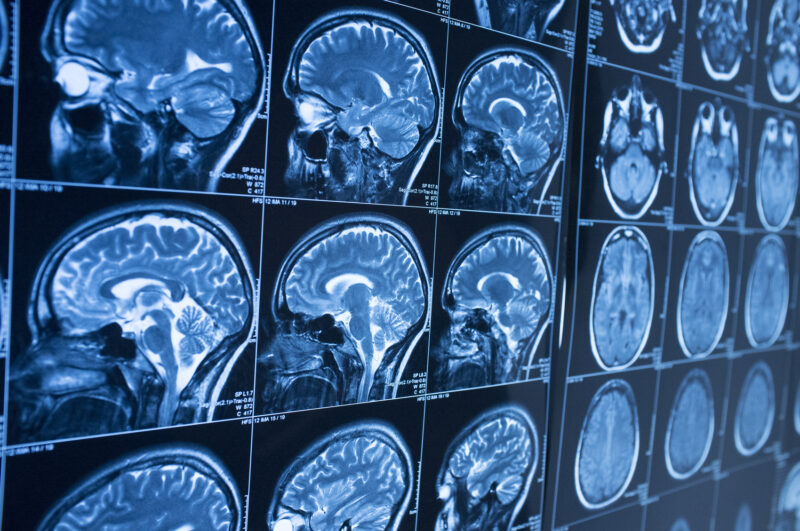What Is CTE?

Chronic traumatic encephalopathy (CTE) is a term that has garnered significant attention, particularly within the sports world, and for good reason. This rare, degenerative, and fatal brain disease primarily affects athletes and military veterans with a history of repetitive head trauma.
While it shares some similarities with Alzheimer’s disease, CTE is believed to be caused specifically by repeated traumatic brain injuries.
Introduction to Chronic Traumatic Encephalopathy
CTE stands as a sobering entry within the complex world of sports medicine and neuroscience. In 1927, two physicians proposed the idea that concussions are not temporary and may have chronic effects, including secondary brain degeneration.
A year later, pathologist Dr. Harrison Martland first described CTE as “punch drunk syndrome,” a condition affecting boxers. Building on the findings of his predecessors, he proposed that people who survive a head injury experience changes in the brain that cause chronic neurological symptoms.
For the next seven decades, researchers continued to document similar findings in athletes and victims of brain injury, but few cases were confirmed until 2005. Dr. Bennet Omalu published evidence of CTE in former Pittsburgh Steeler Mike Webster.
Soon after this, the Concussion Legacy Foundation was formed. The UNITE Brain Bank was created in partnership with Boston University and the U.S. Department of Veterans Affairs. The brain bank has studied the brains of over 1,300 veterans and athletes. It became the world’s first repository dedicated to studying CTE.
Since 2008, it has helped leading researchers find cases of CTE in athletes who played ice hockey, baseball, rugby, soccer, and football at the high school, college, and professional levels.
What Causes CTE?
Repetitive brain trauma is believed to be the cause of CTE. This may involve serious traumatic brain injuries, mild concussions, or even subconcussive impacts. The latter does not cause immediate symptoms and often goes undiagnosed, but a growing body of research suggests these subconcussive hits should be taken seriously.
Studies have even found that conventional wisdom about the force necessary to cause a concussion is wrong. An NFL-commissioned study determined a blow under 85g is unlikely to cause a concussion. A major study of 104,000 impacts recorded with football helmet sensors found nearly half of all recorded concussions happened below 85g.
Researchers believe repetitive brain trauma triggers the buildup of tau, a nerve cell protein. Tau buildup is associated with other neurodegenerative diseases like Alzheimer’s, but the buildup pattern is unique to CTE.
CTE can happen with any sports or activities that cause repetitive head injuries, including:
- Boxing and martial arts
- American football
- Soccer
- Hockey
- Wrestling
- Rugby
- Lacrosse
- Skateboarding
Military service and even physical abuse may cause CTE. American football and boxing are the two greatest threats. These sports have the most significant risk of subconcussive and repetitive head trauma linked to CTE.
Among football players, linemen have the most helmet-to-helmet contact conducive to causing CTE. Speed positions like linebacker and quarterback are prone to high-speed blows. A 2000 study found over 60% of NFL players had already experienced at least one confirmed concussion, and 26% of players had at least three known concussions.
The average high school football player sustains 650 impacts with up to 2,000 or more blows in a single season.
Helmets cannot fully protect the brain from a concussion or CTE.
Frightening CTE Statistics
A study published in 2023 examined the brains of contact sports athletes who died before 30. All 152 brains were donated to the UNITE Brain Bank.
The study found:
- 40% of the athletes had CTE
- Most donors only played sports at an amateur level, including 70% with CTE
- 75% of the donors with CTE played football
- Suicide was the most common cause of death among donors, followed by accidental drug overdose
The research suggests that the longer the playing career, the higher the risk of CTE. It also clearly showed that CTE pathology begins early.
Another study examined how common CTE is among the general population. It examined brain samples and medical records of 450 nonathletes and 300 contact sports athletes. It found about 6% of brains showed all or some signs of CTE.
The people who had CTE were 31% more likely to develop dementia and 27% more likely to develop Alzheimer’s in particular.
9% of the athletes had signs of CTE compared with 3% of nonathletes. Football players who played past high school had the highest rate of CTE. Playing high school football had a 2.6x higher chance of CTE compared to nonathletes, but playing beyond high school had a 13x higher risk.
What Are the Symptoms of CTE?
Because how and when chronic traumatic encephalopathy develops is not yet well understood, there are no specific symptoms clearly linked with the condition. Some people develop symptoms soon after repetitive brain trauma, but CTE often takes years or even decades to become apparent.
The wide-ranging symptoms of CTE may include:
- Cognitive impairment: This includes memory loss, difficulty thinking, and trouble with organization and planning.
- Mood disorders: Substance abuse, depression, and suicidal thoughts are common with CTE.
- Behavioral changes: Many people with CTE experience increasingly impulsive behavior and aggression.
- Motor symptoms: CTE can cause parkinsonism or slowed movement with shaking and difficulty speaking. Some people develop motor neuron disease, which damages brain cells that control breathing, swallowing, speaking, and movement. Issues with balance and walking are common.
It’s believed CTE comes in two forms. The early-onset form usually causes symptoms in the 20s to 30s. Symptoms are largely behavioral and mental, including aggression, impulsivity, and depression.
The other form is believed to cause symptoms around the age of 60. At this age, symptoms are more likely to involve cognition and motor control, eventually progressing into dementia.
CTE Diagnosis and Treatment Options
Currently, the only way to diagnose CTE is posthumously through an autopsy. CTE causes a distinctive pattern of tau buildup that can be detected through a neuropathological exam.
Prior to death, brain imaging, neurological exams, medical history, and other tests can be used to rule out other possible causes of symptoms. Someone may be diagnosed with traumatic encephalopathy syndrome (TES), a condition associated with CTE. TES is believed to represent chronic post-concussive effects and the clinical presentation of CTE.
To be diagnosed with TES, someone must have:
- Significant exposure to repeated blows to the head from military service, contact sports, or some other cause; and
- Progressive cognitive impairment; and/or
- Neurobehavioral dysregulation like impulsivity, violent outbursts, or emotional instability
With or without a diagnosis of TES, there is no treatment currently available for CTE or the degenerative effects of repetitive brain trauma. Medical care focuses on managing symptoms and improving quality of life.
The only way to prevent CTE is to avoid head trauma. Sadly, we have no way to protect the brain from injury in an accident or blow to the head. Even the best helmets cannot stop damage from subconcussive and concussion injuries, let alone serious brain injuries.
Athletes are not alone in facing the threat of CTE. It also affects military veterans and victims of abuse. People who experience a second concussion or blow to the head too soon after a previous head injury may also be at risk of CTE. This means victims of falls and car accidents may be at a higher risk.
Contact an Experienced Jacksonville Brain Injury Attorney If You Need Legal Guidance
If you or a loved one has suffered a brain injury, the damage may be greater than it seems initially. Even a concussion can have a lasting impact in ways that are not readily apparent.
Contact our Jacksonville brain injury lawyers for a free consultation if you believe your injury was caused by someone else. We will help you explore your legal options to recover compensation and get the quality care you need.
For more information, please contact the Jacksonville and Ponte Vedra personal injury law firm of Baggett Law Personal Injury Lawyers at the nearest location to schedule a free consultation today.
We serve Duval County, St. Johns County, and its surrounding areas:
Baggett Law Personal Injury Lawyers – Jacksonville
9471 Baymeadows Rd #105,
Jacksonville, FL 32256
(904) 736-7813
Baggett Law Personal Injury Lawyers – Downtown Jacksonville
121 W Forsyth St Suite 1000,
Jacksonville, FL 32202
(904) 822-4225
Baggett Law Personal Injury Lawyers – Ponte Vedra
480 Town Plaza Ave #130,
Ponte Vedra Beach, FL 32081
(904) 675-1167

